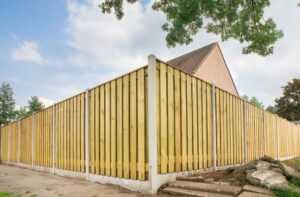The Geology of El Cajon, California
Introduction
El Cajon is a city in San Diego County, California located approximately 15 miles northeast of downtown San Diego. With a population of over 100,000 residents, El Cajon is a major suburb within the San Diego metropolitan area. The city rests in a valley surrounded by mountains and hills, which contribute significantly to the area’s unique geology. In this local guide, we’ll explore the geological history, rock formations, soils, minerals, and other geological features that make up the landscape of El Cajon.
Geological History
Formation of the San Diego Area
The geology of the San Diego region began to take shape around 200-250 million years ago during the Triassic and Jurassic periods. At this time, San Diego County was located along the edge of North America’s continental shelf. Over millions of years, thick marine sediments accumulated on this shelf. Volcanic activity associated with the subduction of the Farallon tectonic plate also deposited ash and lava flows onto the growing sediments.
By 140 million years ago, during the Cretaceous period, the area that would become El Cajon was lifted above sea level, exposing the accumulated marine sediments. These sediments hardened into sedimentary rock layers. Beginning around 100 million years ago, tectonic forces started pushing the granite base of the North American continent westward, creating folding and uplifting of the sedimentary rocks.
Formation of the Peninsular Ranges
Around 20 million years ago, tectonic activity accelerated, triggering major uplift that created the Peninsular Ranges that run down the length of San Diego and Baja California. This rapid uplift formed long north-to-south trending faults throughout the region. In the El Cajon area, the Elsinore and La Nacion fault zones developed as major strike-slip faults cutting through the landscape.
Over the last few million years, erosion and additional tectonic activity have shaped the granitic and metamorphic basement rocks, along with the overlying sedimentary layers, into the mountain ranges, valleys, and hills seen across El Cajon today.
Major Geological Formations
The geology of El Cajon reflects its position within the Peninsular Ranges, as well as the major fault zones running through the area. Here are some of the major geological formations that shape the landscape:
Granitic Rocks
Granitic rocks, including granite, granodiorite, and tonalite, underlie much of El Cajon. These form the basement rock of the Peninsular Ranges. Granitic rocks are igneous intrusive rocks, meaning they crystallized from magma below the surface. They tend to form steep rounded hills and knobs across the city.
Popular places to see granitic outcrops include Mount Helix, Mother Miguel Mountain, and parts of Gillespie Field. The granite has eroded into sandy soils in many areas.
Metamorphic Rocks
Bands of metamorphic rock, formed when existing rock was subjected to intense heat and pressure, are present in parts of El Cajon. These include gneiss and schist. Major outcrops appear in the northern part of the city, especially around Lexington Reservoir and east of Slaughterhouse Canyon. The metamorphic zones resulted from ancient igneous activity.
Sedimentary Rocks
Sedimentary rock layers overlay the granitic basement rock throughout much of El Cajon. These rocks formed as layers of marine sediments were deposited between 200-65 million years ago. As the area uplifted, the sediment hardened into rock.
Major sedimentary units include the Friars Formation, Mission Valley Formation, Stadium Conglomerate, and Cabrillo Shale. Fossils can be found in some of the sedimentary rocks, especially near Skyline Truck Trail. The erosion patterns of the sedimentary rocks produce the layered, cliff-like terrain visible around much of El Cajon.
Alluvium
Alluvium refers to sediment deposits left by flowing rivers and streams. In El Cajon, alluvial deposits are prominent along the floodplains of the San Diego River and Forester Creek. These areas contain loose gravel, sand, silt, and clay transported by water flows. Since the alluvium is less consolidated, it is more prone to erosion. The alluvial soils along Forester Creek have contributed to the formation of Sycamore Canyon.
Colluvium
Colluvium describes unconsolidated sediments that have moved downslope along hillsides and canyon walls, typically through a mix of gravity and water flows. El Cajon’s hilly terrain contains extensive colluvial deposits mixed from the weathering and erosion of the underlying bedrock. Colluvium appears as loose, sloping piles of rocky debris.
Significant Geological Features
Faults
The Elsinore Fault Zone and the La Nacion Fault Zone intersect near El Cajon, making faults a defining geological feature. The active Elsinore Fault runs along the city’s western edge, juxtaposing different rock units from the Peninsular Ranges against each other. The northwest-southeast trending La Nacion Fault also slices through the area. While the faults present seismic hazards, they have also contributed to creating the topography by uplifting certain rock units.
Mountains and Hills
El Cajon’s setting within the rugged terrain of the Peninsular Ranges produces prominent mountains and hills. These include foothills of the Laguna Mountains to the east and mountains associated with the San Diego River valley to the south and west, such as the San Vicente Mountains. The granitic and metamorphic core of the hills has eroded into a mix of round bouldery forms and cliffs.
Major named peaks include Mother Miguel Mountain, Mount Helix, and Iron Mountain. Elevations reach over 1,500 feet in the northern part of the city. The mountains and hills provide scenic backdrops for the city and contribute to its character.
Canyons and Drainages
With its setting between mountain ranges, El Cajon contains numerous canyons, ravines, and drainage channels etched into the hilly and mountainous terrain. These drainages provide a way for rainfall and floodwaters to make their way downhill toward the major rivers and creeks. Significant canyons include Sycamore Canyon, Henderson Canyon, and Slaughterhouse Canyon. The canyons display the erosive power of water on the different rock units.
Lakes and Reservoirs
While natural lakes are limited due to the semi-arid climate, El Cajon does contain two manmade reservoirs. Murray Reservoir was created through the damming of Boulder Creek south of Fletcher Parkway. Lexington Reservoir, situated in the northern part of the city, collects water from drainage areas of the El Cajon Mountains. Both reservoirs, operated by the Helix Water District, provide drinking water storage and recreational opportunities.
Alluvial Fans and Terraces
Alluvial fans and terraces appear where mountain streams exit into valleys and spread out sediment. In El Cajon, prominent alluvial features form where drainages exit the mountains along the edges of the San Diego River valley. These include alluvial terraces stepping up toward the San Vicente Mountains in the community of Bostonia. Other alluvial fans and aprons have developed along the southern base of the El Cajon Mountains.
Mineral Resources
Mineral resources have played only a minor role in El Cajon’s history and development. Limited mineral deposits in the area include:
- Sand and gravel: Alluvial deposits along the San Diego River and its tributaries provided sand and gravel resources. These were historically mined for construction aggregate, but most extractive activities have ceased.
- Crushed stone: Small quarries once excavated crushed stone from granitic outcrops in the hills. However, other construction aggregate sources have replaced these local quarries.
- Clay: Sedimentary deposits in the area contain clay suitable for brick manufacturing and tile. Clay resources were utilized for local brickyards and tile companies in the early 20th century, but only minimal extraction occurs today.
- Gold: Traces of gold have been found associated with the metamorphic formations, but not in quantities that ever supported significant mining activity. Minor amounts of placer gold occur in stream gravels. During the late 1800s, a few unsuccessful attempts were made to mine gold within the current city.
Overall, El Cajon’s position on the periphery of San Diego limited any substantial mineral development. While mineral extraction once supplied local building needs, most materials are now imported from other areas.
Soils
Soil types reflect the varied geology across El Cajon, ranging from well-drained rocky slopes to fine silty basins. Here are some of the major soil associations:
- Cieneba-Fallbrook Association: These shallow, somewhat excessively drained soils occur on hills and mountains derived from granitic and metamorphic rocks. Vegetation includes chaparral and woodlands.
- Las Posas-Huerhuero Association: Moderately deep, well-drained soils on upland terraces and foothills. Often used for irrigated agriculture and dry farming.
- Placentia-Corralitos Association: Deep, well-drained soils on alluvial fans and terraces with loamy textures. Used extensively for agriculture and urban development.
- Riverwash: These deep, excessively drained sandy and gravelly soils occupy the San Diego River floodplain. High water tables and frequent flooding limit uses.
- Tujunga-Exchequer Association: Gravelly loam soils found on alluvial floodplains, subject to high erosion potential. Provides wildlife habitat.
Geologic Hazards
The geology of El Cajon also produces hazards for urban development:
- Earthquakes: The Elsinore and La Nacion fault zones produce high earthquake hazards, including ground shaking, surface rupture, liquefaction, and landslides.
- Landslides and debris flows: Steeply sloping areas with colluvial soils are vulnerable to landslides and debris flows during heavy rainfall. Fires can exacerbate risks by denuding vegetation.
- Flooding: Major floodplains lie along the San Diego River and Forester Creek. Flash flooding also occurs in some drainages.
- Liquefaction: Saturated sandy alluvial soils have high liquefaction potential during seismic shaking, which can damage roads and structures.
- Expansive soils: Clay-rich soils tend to swell when wet and shrink when dry, damaging buildings, roads, and infrastructure.
- Erosion: Weak consolidated soils on steeper slopes are prone to erosion, especially after wildfires remove vegetation.
Proper urban planning, geotechnical studies, and engineered mitigation measures can help reduce these geologic hazards.
Conclusion
From its granitic base to its alluvial floodplains, the diverse geology of El Cajon has played a central role in shaping its landscape and history of development. The alternating bands of igneous, metamorphic, and sedimentary units within the Peninsular Ranges, disrupted by active fault zones, create a scenic setting of mountains, hills, and canyons.
While mining provided early economic opportunities, the area’s geology and soils now lend themselves to urban growth, recreation, and natural open spaces that characterize modern-day El Cajon. Understanding the geologic formations and hazards remains key for sustained prosperity. El Cajon’s rich geological variety provides an intriguing backdrop to daily life.
Service Area
East El Cajon (91919, 92021)
Downtown El Cajon (92020)
Fletcher Hills (92020)
Rancho San Diego (92019)
Casa de Oro (92019)
Bostonia (91919)
Granite Hills (92019)
Pepper Drive (92020)
Lakeside (92040)
Parkway (92020)
Emerald Hills (92020)
West El Cajon (92020)
Fletcher Peak (92020)
Anderson (92020)
Wells Park (92020)
Los Coches Adobe (92019)
Greenfield (92021)
Lexington Hills (92020)
Singing Hills (92019)
Mt Helix (92040)
Hours
Monday: 9:00 AM – 5:00 PM
Tuesday: 9:00 AM – 5:00 PM
Wednesday: 9:00 AM – 5:00 PM
Thursday: 9:00 AM – 5:00 PM
Friday: 9:00 AM – 5:00 PM
Saturday: 9:00 AM – 5:00 PM
Sunday: 9:00 AM – 5:00 PM
Contact Us.
Get Solutions For All Fencing Services
Every day from
9:00 — 5:00
Call to ask any question





